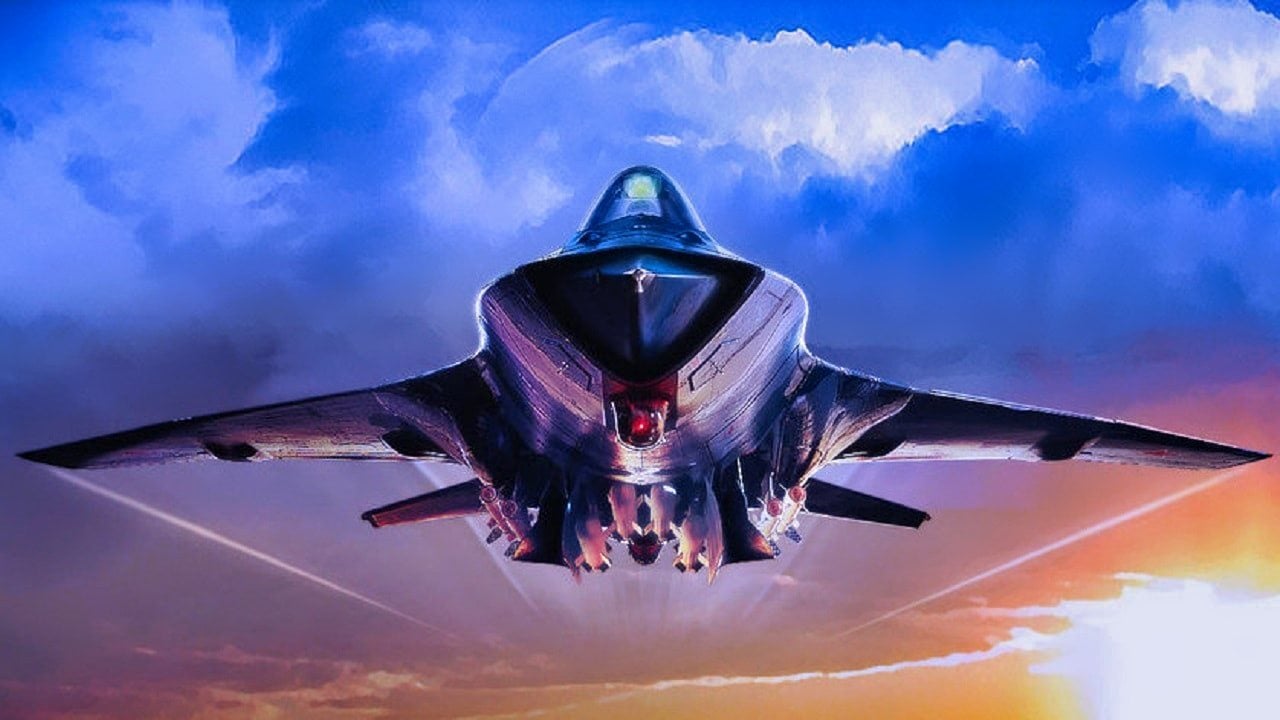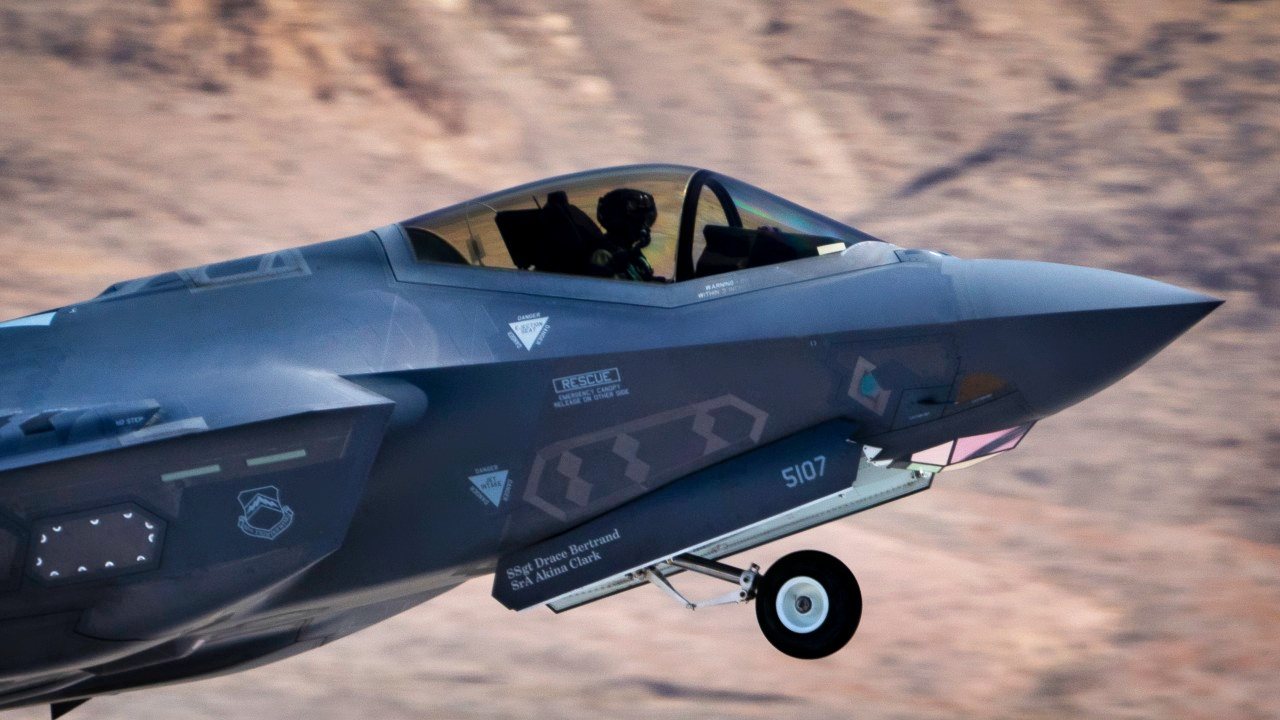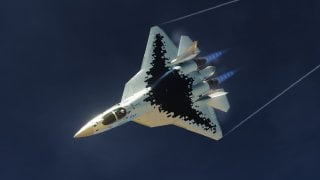Russia's Su-57 Felon Fighter Nightmare Has Just Begun to 'Drop'
Despite Russia’s claims about the Su-57’s advanced capabilities, the stealth fighter has been notably absent from the skies over Ukraine. Instead, Moscow relies on older Soviet-era jets, which have proven more reliable in combat.
Summary and Key Points: Despite Russia’s claims about the Su-57’s advanced capabilities, the stealth fighter has been notably absent from the skies over Ukraine. Instead, Moscow relies on older Soviet-era jets, which have proven more reliable in combat.

-The reluctance to deploy the Su-57 may stem from Russia’s limited number of these aircraft and concerns over their true stealth capabilities. Losing even a few Su-57s to Ukrainian air defenses would be a significant blow to Russia’s airpower and prestige.
-This trend highlights a broader issue in modern warfare, where older, simpler systems are often more effective and survivable than their advanced counterparts.
Russia's Su-57 Fear
Russia has been quick to tout its technological prowess in developing next-level airframes.
For example, they have recently raved about their as-yet-to-be-seen MiG-41, which sounds more like a starfighter from a Star Wars film rather than a real warplane. Another bird that the Russians have made a big deal about (this one is much more real than the mythical MiG-41) has been the Su-57 “Felon.”

This flying gray beast, according to the Russian military, is a fifth-generation warplane that is a challenger to either the American F-35 Lightning II or even the vaunted F-22A Raptor.
Yet, when it has come down to deploying this bird, the Russians have shirked away from committing the Su-57 into the fiery crucible of combat in the unfriendly skies over Ukraine. Instead, they have left the bulk of the fighting to older, Soviet-era planes (and even some of these airframes, such as the Su-22 have struggled in combat there).
Nevertheless, these older warplanes have had a much better track record in pushing the Ukrainians back and placing Russia in a fortuitous position rather than Moscow’s newest, more expensive and complex systems have done.
Russia Fears Losing the Su-57
In fact, reports have been proliferating about the Russian military’s fear of losing the Su-57 to Ukrainian air defense systems. Rather than risk the embarrassment of these costly warplanes being taken down by plucky Ukrainian defenders, the Russians have kept these birds in reserve.
One reason behind their reticence to commit significant amounts of the Su-57 “Felon” into combat has been because Russia does not possess significant numbers of these birds. If any of them were lost in combat, therefore, it might create a critical gap in Russian air capabilities and prove to be a humiliating blow to the prestige of Russian Armed Forces (although illegally invading their neighbor probably didn’t help them in the prestige department).
But if the Su-57 is truly a fifth-generation warplane as Russia claims then its stealth capabilities should be lightyears ahead of what the Ukrainians possess. If that were true, then, Moscow could risk its fancy fifth-generation warplane in the crucible of combat. If, however, the Su-57 is not as stealthy as Russian warplane designers claim then Moscow’s reluctance to deploy these birds makes sense.

And like so many post-Soviet era Russian weapons designs, the Sukhoi Design Bureau, the company that created the Su-57, has struggled to mass produce this system. There are multiple bugs the designers are still working out and the cost and complexity of each individual unit is slowing the production down—especially as Russia is in an ongoing war. It has proven far easier to mass produce older, simpler systems from the Soviet era in the Ukraine War.
Modern War Goes Retro
While some may find the fact that Russia is struggling to build the requisite number of the Su-57s needed to make these fifth-generation birds truly relevant, the fact remains that Russia is defeating Ukraine with their older Soviet-era systems.
So, why risk humiliation at the hands of the losing Ukrainians by deploying some limited number of unproven Su-57s that may not survive their encounter with advanced air defense systems?
This, of course, opens another area of discussion worth noting.
There is a general problem in modern warfare in which the most advanced, expensive systems are increasingly being threatened or destroyed by older, cheaper systems. With the negation of these more advanced weapons of war comes to return of older, classic systems—war is going retro—which may be cheaper and easier to build but reduces the lethality of the force adopting these older systems.
After all, a fifth-generation warplane is supposed to threaten and overwhelm an enemy from such a distance—employing the most advanced stealth capabilities—that it is basically impossible for those fifth-generation warplanes to be tracked and attacked. But that is not the case.
US Should Plan to Deploy Their Older Systems in WWIII
So, going forward, the world’s great powers, including the United States, must prepare for the day when its newest weapons platforms might not work in a war in which the enemy has deployed countermeasures that deprive the US military of its most advanced weapons systems.

Washington should be looking for real lessons learned in the Ukraine War, not just from the allied Ukrainian forces but from the Russian military as well.
About the Author
Brandon J. Weichert, a National Interest national security analyst, is a former Congressional staffer and geopolitical analyst who is a contributor at The Washington Times, the Asia Times, and The-Pipeline. He is the author of Winning Space: How America Remains a Superpower, Biohacked: China’s Race to Control Life, and The Shadow War: Iran’s Quest for Supremacy. His next book, A Disaster of Our Own Making: How the West Lost Ukraine, is due October 22 from Encounter Books. Weichert can be followed via Twitter @WeTheBrandon.
Image Credit: Creative Commons and/or Shutterstock.


